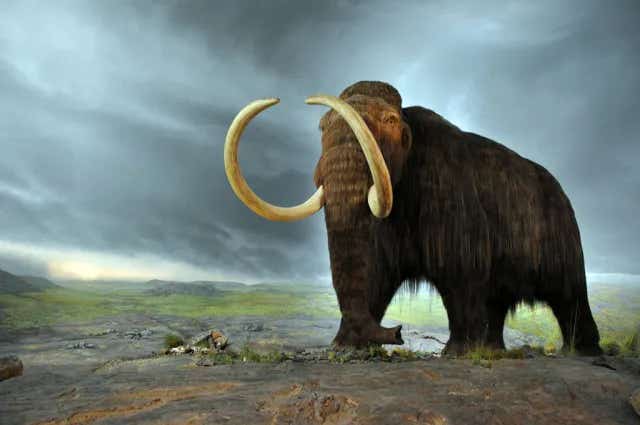Gravitational lensing: Using our sun’s gravity to communicate across the universe
Turyshev has meticulously calculated the intricate mathematics and physics underpinning the concept of a “solar gravitational lens”.

[Dec. 13, 2023: JD Shavit, The Brighter Side of News]
Turyshev has meticulously calculated the intricate mathematics and physics underpinning the concept of a "solar gravitational lens". (CREDIT: Creative Commons)
In the vast expanse of the cosmos, where the mysteries of the universe beckon, humanity's quest for understanding and exploration has long been fueled by innovative technology.
One such groundbreaking development comes in the form of gravitational lensing, a phenomenon that appears as if plucked from the pages of science fiction but has firmly established itself as an indispensable tool in the realm of astronomy. Most recently, the James Webb Space Telescope (JWST) has commanded the spotlight for its remarkable ability to unveil the hidden secrets of distant galaxies by capturing the effects of light bending around massive galaxy clusters in space. However, a new endeavor is now unfolding closer to home, as scientist Slava Turyshev from NASA's Jet Propulsion Laboratory sets his sights on harnessing our very own star, the sun, as a gravitational lens.
In a groundbreaking study, Turyshev has meticulously calculated the intricate mathematics and physics underpinning the concept of a "solar gravitational lens" (SGL), opening doors to a realm of possibilities, from interstellar communication to probing the surfaces of far-flung exoplanets.
Gravitational lensing, in its essence, is a phenomenon that occurs when massive objects create ripples and dents in the fabric of spacetime, causing light to follow these curved paths—a process that can occasionally mimic the effect of a magnifying glass. The concept may indeed seem fantastical, but its significance in the field of astronomy cannot be overstated.
Turyshev's audacious endeavor centers on harnessing the gravitational lensing effect generated by our sun, charting a course toward a transformative leap in astronomical observation. This endeavor not only promises to revolutionize the way we perceive the universe but also holds the potential to enhance our transmitting capabilities for interstellar communication, should extraterrestrial civilizations ever become our cosmic neighbors.
In the realm of telescopes, the adage "bigger is better" holds true. To capture the faintest glimmers of distant celestial objects, telescopes require expansive mirrors or lenses to focus the elusive light. Yet, the colossal scale of such optical instruments is inherently limited by our technological capabilities. Enter the solar gravitational lens—a remarkable alternative to constructing ever-larger telescopes. Instead of relying on colossal mirrors and lenses, the SGL leverages the curvature of spacetime caused by the sun's immense gravitational pull to focus light for us.
Macy Huston, an astronomer at Berkeley, elucidates the unique challenge posed by the SGL concept, stating, "Using the SGL removes the need to build larger telescopes and instead raises the problem of how to get a telescope out to the focal distance of the Sun (and how to keep it there)."
Indeed, this monumental task requires ingenuity and innovation, as the focal point of the sun's gravitational well lies approximately 650 astronomical units (AU) from our star, a distance nearly five times greater than humanity's current record holder, Voyager 1. To surmount this seemingly insurmountable hurdle within a human lifetime, Turyshev's team is pinning their hopes on cutting-edge solar sail technology, a propulsion method that promises unprecedented speed and maneuverability.
As we bear witness to the pioneering investigations of celestial bodies by the James Webb Space Telescope and eagerly anticipate the advent of the Habitable Worlds Observatory in the 2040s, Turyshev's mission emerges as the next monumental stride toward confirming the existence of extraterrestrial life. Scheduled for launch around 2035, the SGL telescope will take center stage once JWST and HWO identify potentially intriguing exoplanets.
Unlike the current state of direct imaging, Turyshev's groundbreaking technology promises to provide detailed surface maps of these distant worlds, boasting a resolution equivalent to a staggering 700 by 700 pixels. As Turyshev explains, "If there is a swamp on that exoplanet, emitting methane, we'll know that's what is positioned on this continent on this island, for example."
Related Stories
Venturing further into the realms of science fiction, the SGL technology holds the potential to serve as both a powerful telescope within our solar system and an interstellar communication network.
Huston envisions the SGL as a beacon that could bridge the gap between planetary systems, allowing us to view distant worlds in unparalleled detail while also facilitating intentional communication with extraterrestrial civilizations. A laser positioned at the sun's gravitational focus could transmit messages to other stars, overcoming the limitations of our current Earth-bound beacon technology.
Nick Tusay, a Penn State astronomer not involved in Turyshev's research, envisions a future where the SGL is instrumental in fostering interstellar communication, stating, "If we were to ever become an interstellar civilization, this [SGL] could potentially be the most effective means of communication between star systems."
A two-lens geometry for power transmission via gravitational lensing showing the transmitter, two lenses, and the receiver. (CREDIT: arXiv.org)
Unlike radio transmissions, which have been escaping Earth's atmosphere since the early 1900s but rapidly diminish in strength with distance, signals emitted via the SGL would remain conspicuous even amidst the background noise of the cosmos. Turyshev asserts that transmission through the SGL is not only feasible but also strongly encouraged by the laws of physics.
However, it is essential to acknowledge that the SGL technology, while groundbreaking, does not eliminate all the challenges associated with interstellar exploration and communication. Despite the newfound ability to send messages, the fundamental constraints of the universe remain unaltered, with light's finite speed serving as an immutable barrier.
Tusay underscores this point, reminding us that "Light still has a maximum speed." Consequently, sending a message to a star located four light-years away would require four years for the message to reach its destination, with an additional four-year wait for the response to return. Nonetheless, the solar gravitational lens represents a monumental stride toward realizing our science fiction dreams of interstellar exploration and communication.
As we look to the stars and ponder the mysteries of the universe, the solar gravitational lens serves as a beacon of hope, illuminating the path toward a future where our dreams of interstellar communication and exploration may one day become a tangible reality. While the road ahead may be fraught with challenges, the indomitable spirit of discovery continues to propel us toward new horizons, where the cosmos beckons with its secrets waiting to be unveiled.
For more science and technology news stories check out our Innovation News section at The Brighter Side of News.
Note: Materials provided above by The Brighter Side of News. Content may be edited for style and length.
Like these kind of feel good stories? Get the Brighter Side of News' newsletter.
Joshua Shavit
Science & Technology Writer | AI and Robotics Reporter
Joshua Shavit is a Los Angeles-based science and technology writer with a passion for exploring the breakthroughs shaping the future. As a contributor to The Brighter Side of News, he focuses on positive and transformative advancements in AI, technology, physics, engineering, robotics and space science. Joshua is currently working towards a Bachelor of Science in Business Administration at the University of California, Berkeley. He combines his academic background with a talent for storytelling, making complex scientific discoveries engaging and accessible. His work highlights the innovators behind the ideas, bringing readers closer to the people driving progress.



